The signs of schizoaffective disorder can often be difficult to identify. Once an individual identifies the symptoms and side effects of schizoaffective disorder, the next step in the recovery journey become clear.
Understanding Schizoaffective Disorder
Learn about schizoaffective disorder
Schizoaffective disorder is a mental illness in which an individual experiences symptoms of schizophrenia, such as delusions and/or hallucinations, as well as mood disorder symptoms, like depression and/or mania. This psychiatric condition is comprised of a combination of many different symptoms of varying severity that affect everyone who is diagnosed with the disorder in various ways.
Without proper treatment, individuals with schizoaffective disorder may have problems holding down a job or difficulty functioning at home or in school. They may have problems with social relationships, either completely isolating themselves from friends or family, or becoming completely dependent upon them. The psychotic symptoms that are associated with this disorder have a significant effect on thinking, decision-making, concentration, memory, and problem-solving skills. In addition to these cognitive impairments, individuals often experience delusions, disorganized speech, and paranoia. Due to the severity of these psychotic symptoms, individuals with schizoaffective disorder sometimes have difficulty distinguishing reality from an imagined reality, which can make functioning in society particularly difficult.
The psychotic features and mood symptoms of this disorder can occur at the same time, or can occur on and off interchangeably. While there is some fluctuation in the presentation of symptoms, the course of this disorder usually presents in a cyclical pattern in which periods of severe symptoms are followed by a return to baseline functioning.
In most cases of schizoaffective disorder, the onset of symptoms typically occurs after the age of 13, with the majority of individuals being diagnosed in early adulthood. Fortunately, newer treatments for schizoaffective disorder and accompanying mood disorders have proven effective in the management of the symptoms and effects of this condition, thus helping those with this disorder re-establish a normal and fulfilling life.
Statistics
Schizoaffective disorder statistics
As one of the less commonly diagnosed mental health conditions, the lifetime prevalence rate for schizoaffective disorder has been estimated at about 0.3%. Higher rates of this disorder have been found in women than in men, which may be due to the fact that women suffer from higher rates of depression. There are also differences in the way schizoaffective disorder presents in men and women. Men report having more psychotic symptoms and a longer illness duration, while women tend to experience more mood symptoms for a shorter period of time.
Causes and Risk Factors
Causes and risk factors for schizoaffective disorder
The exact cause for the development of schizoaffective disorder in unknown, but it may involve a number of factors such as brain chemistry, an imbalance of hormones, and other environmental factors, some of which are described below.
Genetic: Similar to schizophrenia, schizoaffective disorder has proven to have distinct genetic links. Those with first-degree relatives who have schizophrenia, schizoaffective disorder, or a mood disorder are at a higher risk for developing this disorder than those who do not have a similar family history.
Physiological: Certain chemicals in the brain that are responsible for the communication between neurons, which are called neurotransmitters, have been linked to the development of schizoaffective disorder. More specifically, it has been suggested that when dopamine and serotonin are at abnormal levels, this may contribute to the development of schizoaffective disorder.
Environmental: Research has demonstrated that being exposed to toxins or viruses in the womb may contribute to the later development of this disorder. Additionally, it is also possible that birth complications may be related to the development of schizoaffective disorder.
Risk Factors:
- Family history of mood disorders
- Family history of schizophrenia or schizoaffective disorder
- Being exposed to certain toxins or viruses prenatally
- Suffering from complications at birth
Signs and Symptoms
Signs and symptoms of schizoaffective disorder
There is a wide variety of signs and symptoms associated with schizoaffective disorder, and each individual’s presentation will vary in accordance with the severity of the condition. Some of the symptoms of schizoaffective disorder may include:
Behavioral symptoms:
- Inability to cry or express joy
- Angry outbursts
- Inappropriate episodes of laughter
- Engaging in self-harming behaviors
- Hyperactivity
- Speaking too slowly or too quickly to be understood
- Problems functioning in social settings
- Job loss
- Inability to navigate responsibilities at home or at work
- Social isolation
Physical symptoms:
- Flat, expressionless gaze
- Catatonia
- Increased or decreased appetite
- Unexplained weight loss or weight gain
- Dramatic increase or decrease in energy
- Poor hygiene / disregard of physical appearance
Cognitive symptoms:
- Disorganized thinking
- Thoughts of suicide
- Problems with attention
- Hallucinations
- Poor memory
- Bizarre thoughts or perceptions
- Paranoia
- Delusions
- Confusion
- Decreased concentration
Psychosocial symptoms:
- Depression
- Irritability
- Anxiety
- Euphoria
- Mania
Effects
Effects of schizoaffective disorder
Individuals with schizoaffective disorder may experience a number of different effects depending upon the severity of the illness and the individual’s reaction to the mental illness. The effects of untreated schizoaffective disorder may include:
- Relationship problems
- Social isolation
- Impulsive behaviors and emotions
- Incarceration
- Disruption in normal daily activities
- Development of addictions to drugs and/or alcohol
- Increased suicide risk
- Job loss
- Increased need for medical services and care
- Suicidal thoughts
Co-Occurring Disorders
Schizoaffective disorder and co-occurring disorders
It is not uncommon for those with schizoaffective disorder to also have co-occurring mental health conditions. Some of these may include:
- Substance use disorders
- Panic disorder
- Other anxiety disorders
- Obsessive-compulsive disorder (OCD)
- Personality disorders


